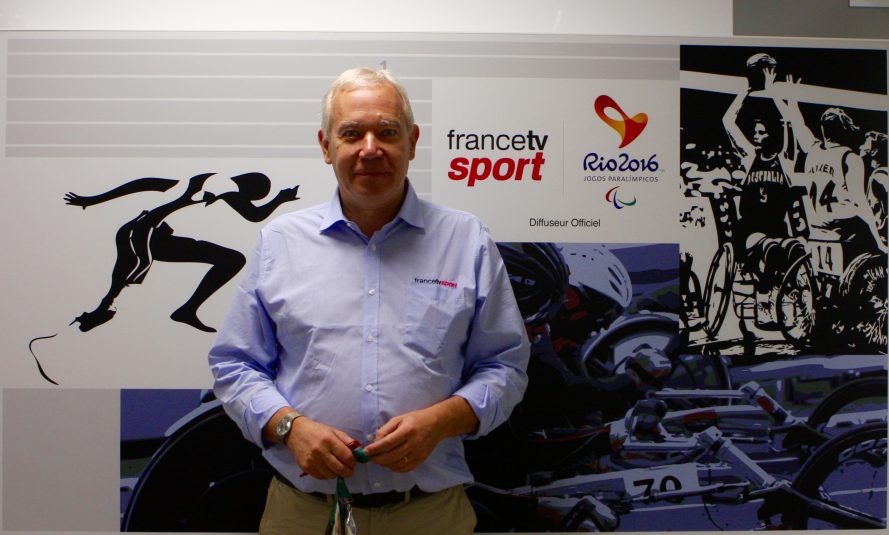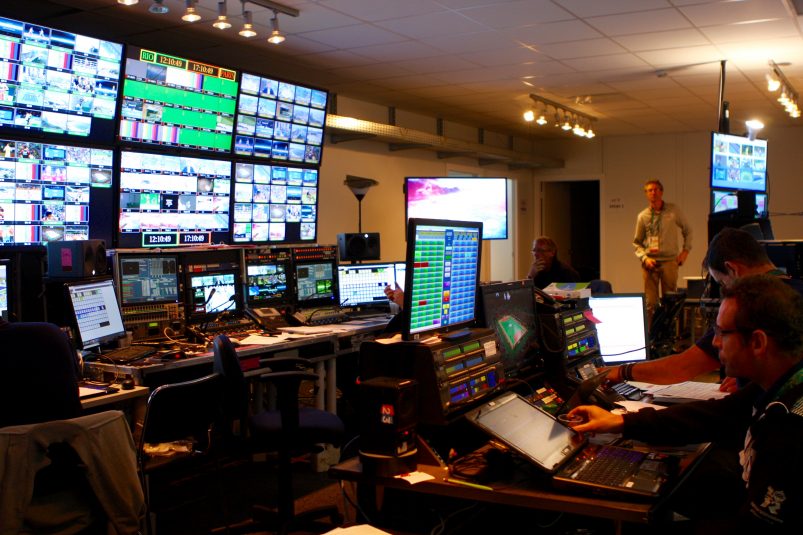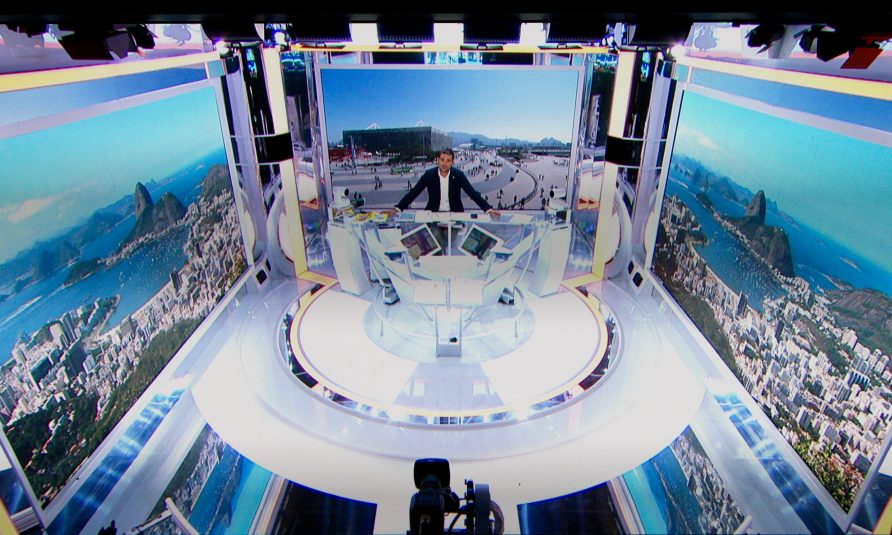Live from Rio: France Télévisions Rio Hub Serves Paris Control Rooms
France Télévisions is on hand at the Rio Olympics with a strong presence that also makes use of fiber connections with Paris so that much of the production work, including production of the main studio at the Olympic Park, and integration of graphics within the broadcast signal, take place in France Télévisions Paris broadcast center.

Francis Closeau says the FranceTélévisions has delivered for Olympic fans in France despite numerous logistical challenges.
Francis Cloiseau, France Télévisions, head of sports production, says operations have been going very well and the team of 190 people working on the production are meeting their goals despite battling logistical issues related to unreliable transportation operations and IBC dining facilities that are far smaller than required are the main pain points for operations.
The core France Télévisions technical facilities at the IBC include a technical operations center that brings in 55 feeds from OBS, 13 mixed zone signals from France Télévisions production teams in the field, and also the output from four on-site Avid editing suites that take content from two ENG crews and creates feature stories (four Avid suites in Paris create competition highlights). The IBC facilities are tied to Paris via fiber and also tied to two studios, one that has four cameras and another with three cameras.

The France Télévisions technical control area makes sure the production team home in Paris gets what they need for proper Olympic coverage.
All of the equipment in Rio was brought over by France Télévisions as it was cost-prohibitive to rent and France Télévisions even had to bring over a construction crew from France to build out the set.
“It was less expensive to bring them from France for construction and we brought over 30 tons of freight as shipping it was less costly than renting,” says Cloiseau. “The only thing we booked here was an OB van and if we could do that over again we would probably bring over our own OB van.”
In Paris there are three control rooms deliver coverage to viewers via France 2 and France 3 (the main events and those featuring French athletes); France 4 (football and rugby) and France O (basketball and volleyball). In addition Equidia Live, a French equestrian specialty channel, broadcasts the Equestrian events (and shares a mixed zone at the events with the France Télévisions team) and all of the events at the Olympics are live streamed via the Web and apps.
“Our programming begins at noon France time with a magazine program with athletes in the studio at Olympic Pack,” says Cloiseau. “After that is 50 minutes of highlights and then we are live from 2 p.m. until 9 p.m.”
Much of the action at night Rio time occurs in the early morning in France so there is a replay of late night events from 8 a.m. to noon on France 3.
The Rio facility is connected to Paris via a 2.5 Gbps STM-16 circuit (there is also a backup) with 34 signals going to France Télévisions and 11 going to Canal Plus which is also showing the games on eight channels.
“One change from London is we worked with JPEG2000 there but if we wanted to use JPEG2000 here we would have needed a 10 Gbps STM-64 circuit and the price between Brazil and Europe is more than one million euros,” says Cloiseau. “So we changed our way of working and when with MPEG4 at 42 Mbps and a small delay of around 500 milliseconds. But it allowed us to cut the cost to less than a quarter of using JPEG2000.”

France Télévisions studio in Olympic Park had to be changed to deal with issues related to too much sunlight.
Another big change from London is that in London the main studio was near Tower Bridge and close to the France House, making it ideal for bringing athletes and celebrities to the studio. But here in Brazil the France House is located near the Copacabana Beach which is too far from most of the athletic competitions. So the decision was made to place the main studio within the Olympic Park so athletes could quickly and easily stop by the studio for interviews.
One unforeseen challenge, however, has been that the studio’s windows are oriented to the north which causes issues with the sun.
“We decided to close the window and instead have three big screens, one of which has a camera shot of Olympic Park that can be shown on the screen behind the talent,” says Cloiseau. “If we had known about the issues with the sun beforehand we probably would have put the studio inside the IBC as it is very expensive to have the space in the Olympic Park.”
The main studio has seven cameras that are being cut from a control room back in Paris. There is also a second studio but the high cost of transmission costs resulted in that four-camera show being cut at that studio location.
In terms of unilateral operations, France Télévisions had a platform with three cameras at the swimming venue and a platform with four cameras at athletics.
Work on the 2018 Winter Olympics will begin this Fall and Cloiseau says the France TV Olympic production team will begin the continuous process of getting everything sorted for the 2018 Games which will be held in PyeongChang, South Korea.
“If they take a stop and a break and then try to come back to Olympic planning it is more complicated so it is easier to have the same people permanently working on it,” he adds.
